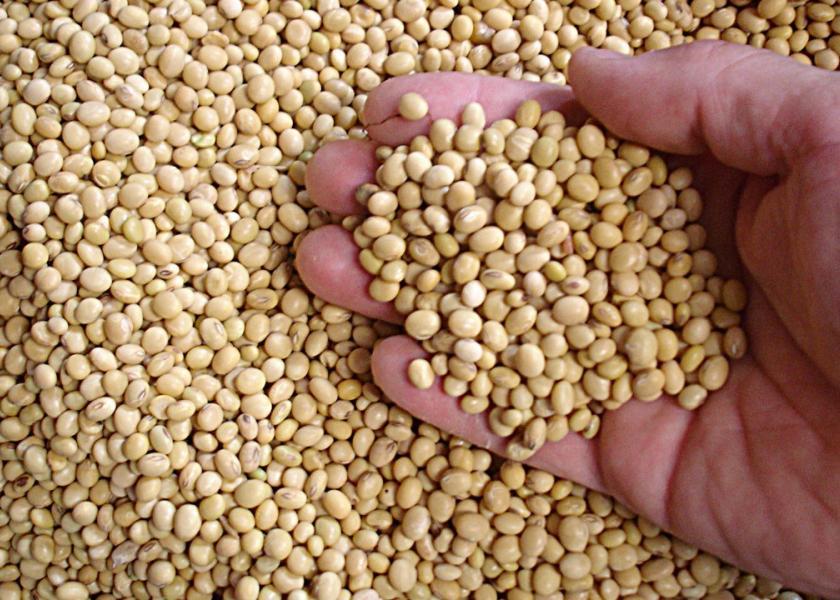Soybean Outlook: 5-30-90 days

March soybean futures fell 7 1/2 cents to 13.69 3/4, down 40 1/2 cents on the week and the contract’s lowest settlement since $13.55 1/2 on Jan. 3. March soymeal fell $3.30 to $405.60 per ton, down $19.40 on the week, and March soyoil fell 20 points to 58.46 cents per pound, down 32 points on the week.
5-day outlook: Soybean futures posted a brief rally yesterday after USDA lowered its South American crop forecasts more than expected but came under pressure today from improved rainfall prospects next week in southern Brazil, where conditions have been particularly dry. Weekend weather in South America and the extent of expected rain next week will be one key to market direction. Showers and thunderstorms will increase in far southern Brazil Jan. 16-18 and southern, central, and eastern Rio Grande do Sul will receive 0.75 to 1.75 inch of rain, with as much as 1.50 to 2.50 inches in a few localities, World Weather said today.
30-day outlook: South American weather during the late growing season and early harvest results will be closely watched. Several private analysts cut their forecasts for South America’s crops during the past two weeks, and additional reductions may help boost soybean futures, though price action this week suggested smaller South American production is largely factored into prices. Stronger export demand is required to maintain soybeans at elevated levels, and recent business has been somewhat lackluster. USDA this week reported net U.S. soybean sales of 735,600 MT for the week ended Jan. 6, up 92% from the previous week but down 1% from the four-week average. Total export commitments (exports plus outstanding sales) of 42.4 MMT so far in 2021-22 are down 23% from the same period in 2020-21.
90-day outlook: Brazil’s soybean shipments should get rolling in February, and even with a shorter crop, the country may still dominate the global export market through spring. Trade focus will eventually shift toward the spring U.S. planting season and widespread expectations for higher soybean acres at the expense of corn, reflecting in part soaring prices for nitrogen fertilizer for the latter crop. Both new-crop corn and soybean futures remain elevated, but December corn, with a gain of 2.2% since the end of last year, has outpaced November soybeans, which is up 1.8%. December corn also ended this week near a contract high of $5.65 set in November.
Daily market summaries and marketing advice is included for Pro Farmer members. Start a 1-month trial here.







